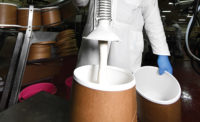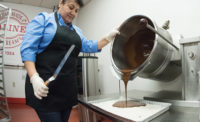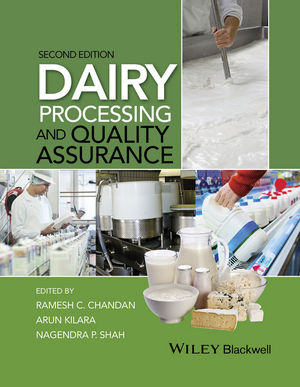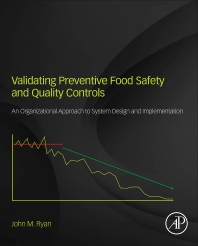Make the most of quality assurance and quality control data
The right software — and the right corporate culture — could help dairy processors collect, manage and disseminate quality assurance- and quality control-related data

Dairy processing facilities have oodles of data potentially available to them, including data tied to quality assurance (QA) and quality control (QC). But collecting, monitoring and disseminating those QA/QC data often is a challenge.
For example, QA teams can become overwhelmed by the sheer amount of data that’s available, noted Ryan Mertes, chief solutions officer for Dairy.com, Frisco, Texas.
“The Internet of Things opens up the ability to capture more data — millions of data points a day — than most labs can handle,” he said. “Having a solid testing plan to focus on the risks, provide timely capture and disseminate outliers in a meaningful way [is] the hardest for the labs.”
On one hand, dissemination of too many data could result in employees “ignoring vital data or wasting time on non-value-added tasks,” Mertes explained. On the other hand, dissemination of too few data could result in employees not discovering a problem until it is too late — the product has already reached the consumer.
“Quality issues damage a company’s image and risk the business everyone’s spent so much time creating,” he added.
The ability to attain real-time logging and tracking of QC testing also is a challenge, explained Daniel Erickson, product strategy manager for St. Cloud, Minn.-based ProcessPro, part of Open Systems Inc., Minneapolis. The company offers enterprise resource planning software for process manufacturers.
“Quality tests are important to the processing of dairy products because the level of pasteurization — time and temperature — will affect the quality of your final product,” he said. “For both quality and legality reasons, dairy companies need the ability to track test results that could include moisture, fat, protein, lactose, acidity and more.”
Failure to do so in an adequate manner could lead to a product recall tied to pathogenic or microbial growth, Erickson noted.
“Another consequence could [be] not meeting certain quality attributes or label statements,” he added. “When producing products for consumers, it is important to have a consistent product that provides the same experience every time they choose to buy your products. Not having a consistent finished good could result in loss of consumer confidence, putting large amounts of product on hold or possibly making it a nonsalable product.”
Software could ease the pain
Fortunately, the right software could help dairy processors capture and manage the right data.
“Having the right software that can provide real-time tracking and trending of inventory and QC data throughout the processing of dairy products can help companies improve their predictability and control of their manufacturing processes,” Erickson said. “Having this will not only help companies with efficiency, but it will also ensure that their finished product is consistently safe, of high quality and [is compliant] with applicable regulatory requirements.”
Such software, Mertes pointed out, also provides quick trends-related data that are easy for every manager to decipher.
“The proper software provides enough details to limit potential problems to specific lines, products, processes or times,” he said. “Often, finding an issue is [a matter of] having enough details on where to look, test and analyze. Having software that goes ‘ground up’ versus just end-of-line testing is key.”
Mertes noted that Dairy.com’s QA Studio product offers full lifecycle QA functionality — from bulk receiving through loadout and in-plant product testing.
“This ground-up support provides sample ‘check in’ with the line, product and time the sample was pulled,” he explained.
Using the data, the software creates graphical trend reports and alerts managers when the data are out of compliance with the plant’s internal specifications. It also provides users with the ability to create and save their own QA report-data views.
Think beyond the right software
Proper collection and management of QA/AC data require efforts that go beyond selection and implementation of the right software, however. When it boils down to it, the keys to success are culture and people, Mertes stressed.
“We see companies with great culture towards QA by providing proper training and funding, giving QA managers sufficient resources and attention in management meetings to review QA test data, and working to identify sound testing strategies as a group,” he said. “And example of a sound testing strategy is reviewing QA data when temperatures on the farm spike and potentially impact the milk shed. These sorts of changes can ripple into the plant if not properly monitored.”
Erickson agreed that culture is key — and that quality should be an integral part of the organizational culture. That type of culture will be able to work proactively when it comes to inventory and analytical testing data collected throughout the manufacturing process. It will also be able to proactively share those data with any employees who play a part in producing the finished product.
“Reviewing historical data will help a company with predictability of their processing method and quality of their finished goods,” he said, offering up a famous quote from philosopher George Santayana: “Those who fail to learn from history are doomed to repeat it.”
Looking for a reprint of this article?
From high-res PDFs to custom plaques, order your copy today!









